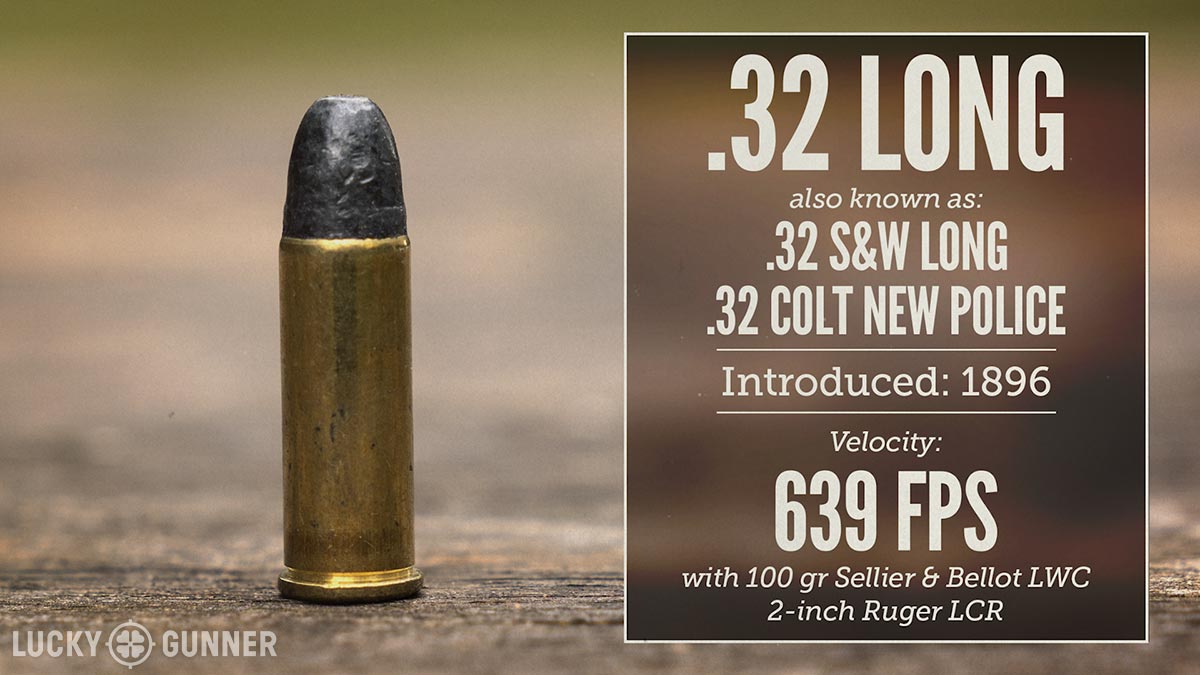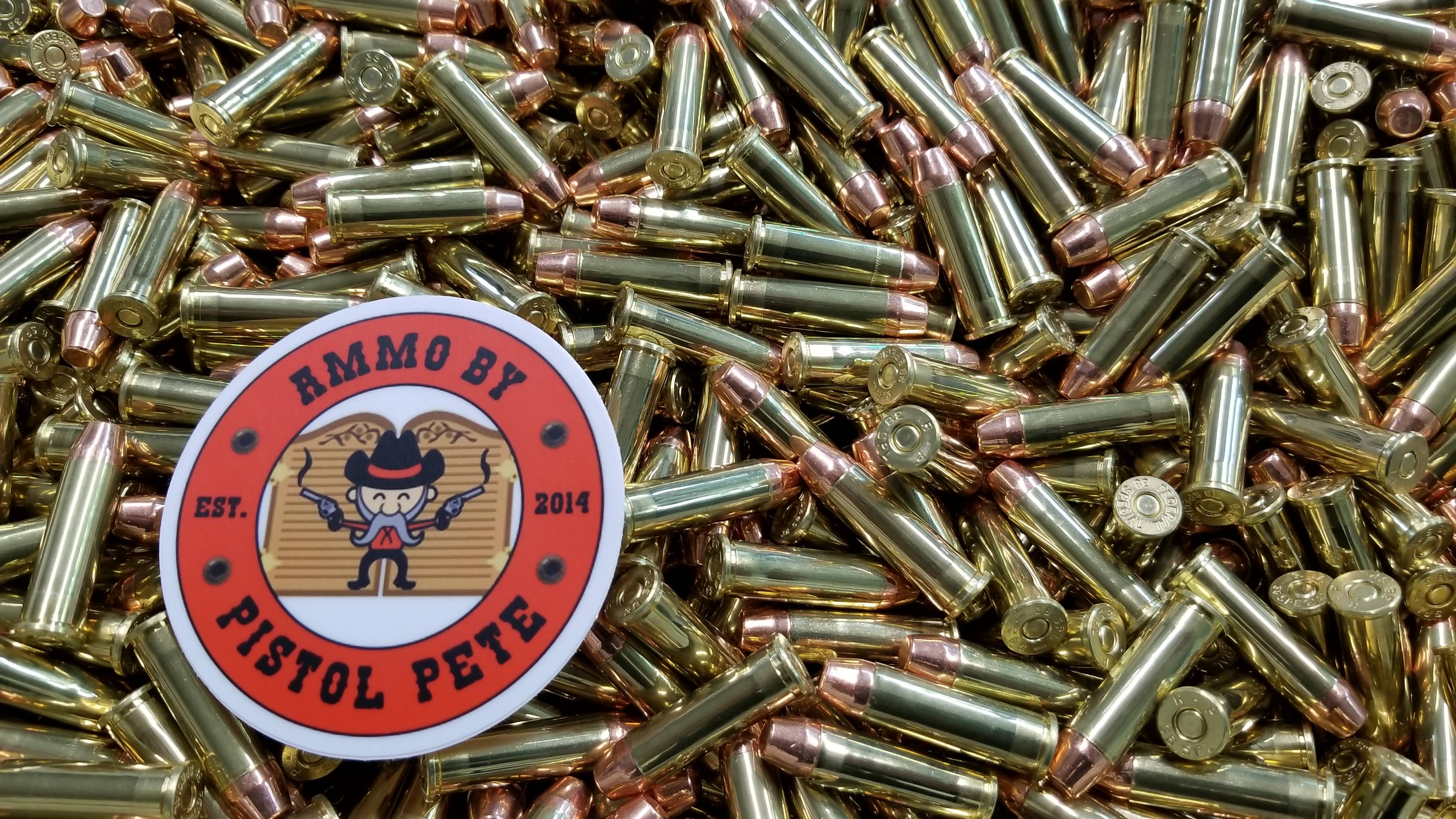.38 Revolver Ammo - .38 S&W, commonly known as .38 S&W Short (sometimes called .38 S&W Short to distinguish it from .38 Long Colt and .38 Special), 9x20mmR, .38 Colt NP (New Police) or . 38/200, is a revolver cartridge manufactured by Smith and Wesson in 1877. Versions of this cartridge were standard British Army revolver cartridges from 1922 to 1963. Although similar in name, they are not interchangeable with later versions. 38 special because of the different body shape and slightly larger bullet diameter.
As was standard for the period, the heeled bullet had the same bullet and case neck diameter of 0.38 inches. Later versions dropped this feature and reduced the dot size, but the name did not change.
.38 Revolver Ammo

After the First World War, the British Army sought to replace pre-war revolvers with more portable weapons. Webley demonstrated a lighter version of his Mk III revolver that would be chambered in modified .38 S&W ammunition, firing a heavy 200 grain (13 gram) bullet. It received favorable reports and the revolver was accepted in principle.
Ammo Evolution: .38 Special Treasury Load
Since Webley had used .38 S&W cartridge dimensions for his revolver and the length of the cartridge was determined by the size of the revolver barrel (as it was wider for the .455), Kinnoch produced a cartridge of similar dimensions. .38 S&W but with 2.8 grains (0.18 g) of "Neonite" nitrocellulose powder and a 200 grain (13.0 g) bullet. In experiments done on cadavers and live animals, it was found that lead bullets, which are too long and heavy for their caliber, become unstable after penetrating the target and increase the effect of the target to some extent. The relatively low velocity allows all of the cartridge's energy to be placed inside the human target rather than passing through the bullet. This was deemed satisfactory and the cartridge design was adopted as the ".38/200 Cartridge, Revolver Mk I".
After some time in service, it was determined that the 200 gram (13 g) soft lead bullet could arguably violate the Hague Convention, which prohibits the use of bullets designed to expand or flatten easily in the human body. A new cartridge was therefore adopted as the "Cartridge, Pistol, .380 Mk II" or ".380 Mk IIz", firing a 180 gr (11.7 g) bullet with a full metal jacket. The .38/200 Mk I loading was retained in service for shooting and practice purposes. However, after the outbreak of war, supply requirements and the need to order available and compatible ammunition, such as the .38 S&W Super Police, from American sources forced the British authorities to develop both the .38/200 Mk I and the MkII/ IIz. to issue Cartridges in lieu of troops deployed for battle.
380 inch Mark II ball cartridge and Cartridge S.A. The .380-inch Mark IIz cannon was theoretically withdrawn from British service in 1963, eventually giving the Browning Hi-Power 9x19mm semi-automatic pistol to most Britons. and Commonwealth forces
Colt Police New Police .38 was Colt's proprietary name for what was essentially a flat nose .38 S&W bullet.
Aguila Ammunition, Pistol, 38 Special, 130 Grain, Full Metal Jacket, 50 Round Box
The US .38 S&W Super Police cartridge was almost identical to the British .38/200 Mk I and used a 200 gr (13 g) lead alloy bullet with a muzzle velocity of 630 ft/s (190 m/s) and a . 176 ft⋅lbf (239 J) of energy and was supplied to the British government by several American manufacturers as equivalent to the Mk I loading.
The MKE 9.65mm Normal (9.2×23mmR (.38 Smith & Wesson)) cartridge features a 177gr (11.5g) lead-antimony alloy bullet with a gold-plated full metal jacket and a boxed brass frame. The "regular" name distinguishes it from the 9.65mm special round (9.1x29mmR (.38 Special)). Uses a nominal bore of 9.65mm (approx. 38.) instead of the actual bore of 9.2mm (approx. .361). Its muzzle velocity is 590 ft/s (180 m/s).
The .380 Mk IIz is still manufactured by the Ordnance Factory Board in India for use in revolvers.

Commercially, only Ruger produces a limited number of revolvers of this caliber for sale overseas, and only a few companies still produce ammunition.
Geco .38 Special Lead Round Nose 10,2g
Most only offer it in a 145 gr (9.4 g) round nose lead bullet, although Fiocchi still markets full metal jacketed bullets. Some companies, such as Buffalo Bore, make different types of ammunition for self-defense and/or hunting. Not long ago, when you were talking about self-defense firearms, specifically for law enforcement officers, you were talking about one type of firearm. Revolver Most of the time, this revolver was chambered in .38 Special. However, times change and the 9mm is now the cartridge of choice for defensive handguns. These two cartridges have dominated the American gun market for nearly a century, so a .38 Special vs. 9mm comparison is probably appropriate.
One of the interesting things about the .38 Special vs the 9mm is that they both hit the shooting world within ten years of each other. The .38 Special was a response to the US Army's experience using a revolver shorter than the .38 Long Colt cartridge in the Spanish-American War. The ineffectiveness of that round against the Mora tribe in the Philippines led the military to look for an alternative sidearm. If you're thinking, "Hey, that's why the military went with the .45ACP and 1911 rounds?", you'd be right. However, the revolver was still a big part of the firearms world at the time, and the Navy (and others) still needed their wheeled guns.
In 1899, Smith & Wesson introduced the .38 Special cartridge in their police and military revolvers. Two years later, Georg Luger took his 7.65x21mm cartridge and turned it into the 9x19mm we know and love today. With the introduction of the "Awesome 9", the 9mm really took off and replaced the .38 Special round as the caliber of choice for law enforcement agencies.
Recently, however, there has been a resurgence of interest in the revolver, especially when used as a pocket pistol or in deep concealment situations. There are advantages to using a wheeled gun for pocket carry. The bulkier shape of a revolver means your pistol doesn't scream "gun" when it's carried in your pocket. If the revolver comes into contact with your or the bad guy's clothing while firing, its performance will not be affected, a useful feature in a pocket gun. Ultimately, the lower round count of a revolver is not that important in a weapon used as a backup or in extreme situations.
Best 38 Special Ammo For Self Defense Chosen By Experts
All of these factors have led to a renewed interest in the .38 Special and the advantages of the .38 Special over the 9mm. Let's start by looking at some key differences between the .38 Special versus the 9mm.
The 9mm is undoubtedly the cheapest centerfire cartridge. That means, dollar for dollar, you'll be putting fewer rounds through the .38 Special versus the 9mm, which can affect your training schedule and your training time.
Of course, since the 2019 Walmart ammo ban, 9mm ammo is a little harder to find, but you get the idea. Any self-respecting gun store will have some form of 9mm ammo on their shelves, and there is a wide variety of bullet sizes, weights, and types for sale on our website as I type this. The .38 Special is also very popular. However, the high demand for 9mm ammo means you'll see fewer variations of the .38 Special vs. 9mm online or in person.

Fun fact: 9mm is a popular choice in revolver divisions at practical shooting sports like USPSA and IDPA. Both sports have minimum weapon power and a standard 9mm 115 grain FMJ is powerful enough to qualify. This is not the case with the .38 Special, as the standard 130 or 135 grain FMJ round is a bit short, leaving the competitor to shoot +P ammo, trade their .38 revolver for something in .357 Magnum, or switch to a shoot 9 revolver mm Reload using moon clip
Special Vs 9mm
Well, technically, these might be considered carbines and not rifles, but we'll leave that hair splitting for another day. AR-pattern rifles chambered in 9mm are the de facto standard in the USPSA Pistol Caliber Carbine (PCC) division, and lever-action rifles chambered in .38 Special are very common in cowboy shooting sports.
Two service guns and two small carry guns, one each chambered in 38 Special and 9mm.
The .38 Special stopped many criminals in its day, and the 9mm is the current defensive choice for armed civilians, law enforcement, and the military. But is the 9mm much better? To find out the effectiveness of the .38 Special against the 9mm as a defensive round, we fired five cartridges each from four different guns into blocks of clear ballistic gel.
The ammunition we will be using in this test is Speer Gold Dots, a very common defensive bullet for both calibers. We will be using the 130 grain version in .38 Special and the 147 grain version in the 9mm rifles. These days, the .38 Special is a common round for muzzleloader revolvers as well as longer barreled rifles. To test this, we'll be using a Ruger LCR with a 1.87-inch barrel, and our comparison rifle will be a Sccy CPX-2.
Special Handgun Hi Res Stock Photography And Images
Taurus 38 revolver holster, 38 revolver shoulder holster, 38 revolver holster, toy 38 revolver, revolver ammo holder, ankle holster 38 revolver, taurus 38 revolver review, 38 special revolver holster, revolver 38 precios, 38 revolver gun holster, 38 special ammo box, 38 caliber revolver holster
0 Comments